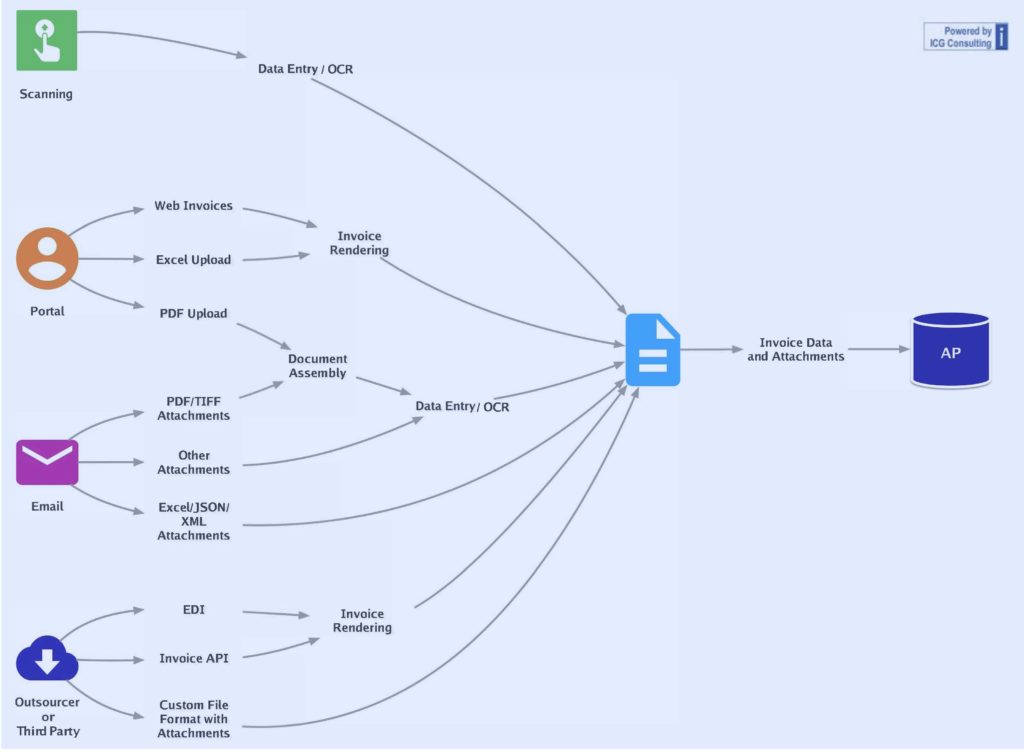Extracting accurate data from invoices and dynamic documents in different forms and from multiple channels has always been a challenge. But an even larger issue is feeding that data to a processing platform in a consistent format. ICG’s data capture, assembly, and import tools provide a mechanism by which invoice records and related documents (email, EDI, scanned, third-party capture, vendor portal, etc.) arrive in the processing system in a standard, compatible format. Let ICG help you implement a capture strategy that will streamline your operations and improve data integrity. Contact ICG today at info@icgconsulting.com to schedule a call or click below for information on this impactful solution.
Link to Additional Information

